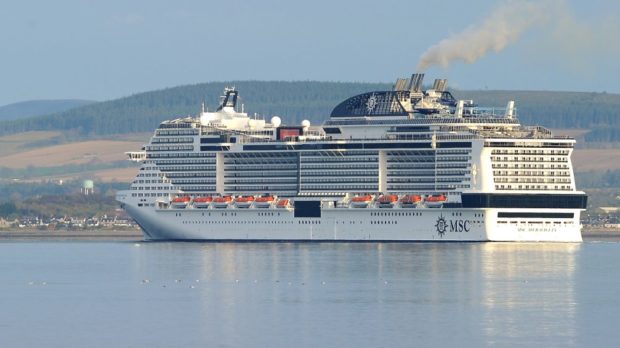The Highland economy could be dealt a devastating blow with the loss of its lucrative cruise line business as a result of any tourist tax.
That was the dire warning from four leading business organisations yesterday, who said the move could make cruise companies avoid Scotland entirely.
The Port of Cromarty Firth alone estimates that its cruise passengers contribute around £18million a year directly to the Highland economy.
This year it was the busiest cruise port in Scotland, welcoming more than 167,000 passengers. Scrabster had 5,370 cruise ship passengers in 2019.
The Scottish Government has just finished a consultation on proposals to give local authorities the power to introduce a Transient Visitor Levy (TVL).
Under the scheme, councils could impose a rule that hotels or other businesses would have to charge extra money per visitor per night.
In a joint submission to the consultation, the chambers of commerce for Inverness, Caithness and Lochaber, plus the Cairngorms Business Partnership, raise their concerns on behalf of 1,220 business members in the Highlands.
The three chambers of commerce chief executives – Stewart Nicol, Inverness, Trudy Morris, Caithness, and Frazer Coupland, Lochaber, – announced strong opposition to the levy in a submission to Highland Council.
Mark Tate, chief executive of the Cairngorms Business Partnership, has added his voice to the campaign against local authorities being given powers to introduce the levy.
Mr Nicol said: “It is not just the ports, this would have a devastating impact across the whole Highland economy.”
Highland Council says a TVL is one option it is considering as a way of raising income to manage the impact of tourism and help it invest in the industry. It estimates it could generate £5-10 million a year.
Council leader Margaret Davidson has said previously: “The tax is one option the council is considering to raise income to manage the challenges tourism is both facing and contributing to in Highland.”
In a joint statement, the chiefs of the four groups said: “We believe there is a strong possibility that, in these circumstances, the operators will simply and immediately move to a different destination as has been the experience in Amsterdam.
“As well as our region being damaged by cruise liners moving to other Scottish ports, there is always the possibility that they would decide not to visit any port in Scotland at all.”
Mr Nicol added: “We recognise the importance of the tourism sector to Scotland and our region’s economy. Indeed, we would argue that the Highlands plays a significant role in ensuring Scotland is one of the top tourism destinations in a global context.
“That is why we feel this levy would be wrong for our members and our visitors as it would send out a very negative message.”
